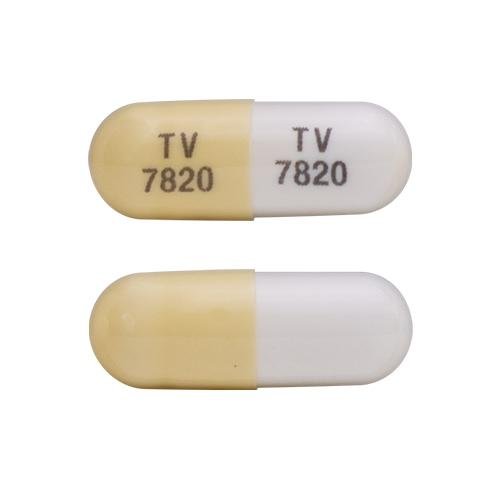Fingolimod Disease Interactions
There are 9 disease interactions with fingolimod.
- CV disease
- Hepatic impairment
- Hypertension
- Infections
- Macular edema
- Respiratory dysfunction
- Encephalopathy
- MS
- Malignancies
Fingolimod (applies to fingolimod) CV disease
Major Potential Hazard, Moderate plausibility. Applicable conditions: Heart Disease, Cerebrovascular Insufficiency
Fingolimod is contraindicated in patients who have had a recent myocardial infarction, those with unstable angina, stroke, transient ischemic attack, decompensated heart failure with hospitalization, or Class III/IV heart failure, a history of Mobitz Type II 2nd degree or 3rd degree AV block or sick sinus syndrome, unless the patient has a pacemaker, baseline QTc interval of >= to 500 msec., or those patients being treated with Class Ia or Class III anti-arrhythmic drugs.
Fingolimod (applies to fingolimod) hepatic impairment
Moderate Potential Hazard, Moderate plausibility. Applicable conditions: Liver Disease
Cases of liver injury with hepatocellular and/or cholestatic hepatitis have been reported with fingolimod in the postmarketing setting. Patients with preexisting liver disease may be at increased risk of developing elevated liver enzymes when taking fingolimod. It is recommended to obtain liver enzyme results before initiation of therapy. No dose adjustment is needed in patients with mild or moderate hepatic impairment. Closely monitor patients with severe hepatic impairment as this agent exposure is doubled in these patients and the risk of adverse reactions is greater. Discontinue if significant liver injury occurs.
Fingolimod (applies to fingolimod) hypertension
Moderate Potential Hazard, Moderate plausibility.
Hypertension was reported as an adverse reaction in patients on fingolimod. Blood pressure should be monitored during treatment with this agent as it can increase the blood pressure of patients with hypertension.
Fingolimod (applies to fingolimod) infections
Moderate Potential Hazard, Moderate plausibility. Applicable conditions: Infection - Bacterial/Fungal/Protozoal/Viral
Fingolimod may increase the risk of infections, and some serious infections with opportunistic pathogens including viruses have been reported. Prior to treatment, a recent CBC (i.e., within 6 months or after discontinuation of prior therapy) should be available. Consider withholding treatment if a patient develops a serious infection, and reassess the benefits and risks prior to reinitiation of therapy.
Fingolimod (applies to fingolimod) macular edema
Moderate Potential Hazard, Moderate plausibility. Applicable conditions: Uveitis, Diabetes Mellitus
Fingolimod increases the risk of macular edema. Patients with a history of uveitis, and those with diabetes mellitus are at increased risk of macular edema. It is recommended to perform an examination of the fundus including the macula in all patients before starting treatment, again 3-4 months after starting treatment, and again at any time after a patient reports visual disturbances. A decision on whether or not to discontinue therapy should include an assessment of the potential benefits and risks.
Fingolimod (applies to fingolimod) respiratory dysfunction
Moderate Potential Hazard, Moderate plausibility. Applicable conditions: Pulmonary Impairment
Cases of dyspnea in patients using fingolimod have been reported during clinical trials. Dose-dependent reductions in forced expiratory volume over 1 second (FEV1) and diffusion lung capacity for carbon monoxide (DLCO) were observed in patients treated with fingolimod as early as 1 month after treatment initiation. Caution with patients at risk of dyspnea and spirometric evaluation of respiratory function and evaluation of DLCO should be performed during therapy if clinically indicated.
S1P (applies to fingolimod) encephalopathy
Moderate Potential Hazard, Moderate plausibility. Applicable conditions: CNS Disorder
Rare cases of posterior reversible encephalopathy syndrome (PRES) have been reported in patients receiving a sphingosine 1-phosphate receptor modulator. It is recommended to promptly schedule a complete physical and neurological examination and should consider an MRI, if a patient develops any unexpected neurological or psychiatric symptoms/signs, any symptom/sign suggestive of an increase of intracranial pressure, or accelerated neurological deterioration. Delay in diagnosis and treatment may lead to permanent neurological sequelae. Exercise care when using this agent in patients with a history of ischemic stroke or cerebral hemorrhage. Treatment should be discontinued if PRES is suspected.
S1P (applies to fingolimod) MS
Moderate Potential Hazard, Moderate plausibility. Applicable conditions: Multiple Myeloma
Rare cases of severe exacerbation of multiple sclerosis (MS), including disease rebound, have been reported after discontinuation of sphingosine 1-phosphate receptor modulator in MS treated patients. The possibility of severe exacerbation of disease should be considered after stopping treatment with these agents. Patients should be observed for a severe increase in disability upon discontinuation and appropriate treatment should be instituted, as required.
S1P modulators (applies to fingolimod) malignancies
Moderate Potential Hazard, Moderate plausibility. Applicable conditions: Skin Cancer
Cases of malignancies, including skin malignancies have been reported in patients treated with some sphingosine -1-receptor (S1P) receptor modulators. Skin examinations are recommended prior and during treatment in all patients, particularly in those with risk factors for skin cancer. Suspicious skin lesions should be promptly evaluated, and patients at increased risk should wear protective clothing and use sunscreen with high protection factor.
Switch to professional interaction data
Fingolimod drug interactions
There are 666 drug interactions with fingolimod.
Fingolimod alcohol/food interactions
There is 1 alcohol/food interaction with fingolimod.
More about fingolimod
- fingolimod consumer information
- Check interactions
- Compare alternatives
- Pricing & coupons
- Reviews (99)
- Drug images
- Side effects
- Dosage information
- During pregnancy
- Drug class: selective immunosuppressants
- Breastfeeding
- En español
Related treatment guides
Drug Interaction Classification
| Highly clinically significant. Avoid combinations; the risk of the interaction outweighs the benefit. | |
| Moderately clinically significant. Usually avoid combinations; use it only under special circumstances. | |
| Minimally clinically significant. Minimize risk; assess risk and consider an alternative drug, take steps to circumvent the interaction risk and/or institute a monitoring plan. | |
| No interaction information available. |
See also:
Further information
Always consult your healthcare provider to ensure the information displayed on this page applies to your personal circumstances.


